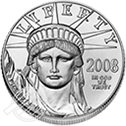The Message is Clear
Yesterday was a busy day for the Fed. Several central bank officials gave speeches throughout the day that were then followed by the release of the latest FOMC meeting minutes in the afternoon.
Some of the speeches appeared to provide differing opinions on the economy and how the central bank should proceed. Chicago Fed President Charles Evans alluded to the Fed’s previous plans for another three rate hikes in 2019.
Atlanta Fed President Raphael Bostic provided his take on the central bank’s plans going forward, essentially saying that he believes that one more hike may be appropriate.
Boston Fed President Eric Rosengren discussed his thoughts as well, echoing the notion that the central bank should take a wait-and-see approach towards policy. His commentary appeared to be neither overly dovish nor overly hawkish.
Then came the FOMC meeting minutes. The latest minutes showed some clear disagreement among voting members. In fact, some members felt the Fed should refrain from another hike in December (they did in fact hike again by 25 bps). The minutes also showed some concern and suggested that the Fed would take a patient wait-and-see approach going forward. It certainly sounds like the scope of any further tightening is going to be limited, and that any further hikes could be farther down the pike than originally anticipated.
Although the messages from Fed officials appear to be mixed, one thing seems clear: The economy and markets cannot tolerate higher interest rates.
This has been made abundantly clear already. Much of the stock market decline and volatility in recent months has been primarily driven by two factors: Higher rates and the ongoing war over trade.
The Fed has obviously taken notice of these factors as well as a global slowdown and has changed its tune dramatically. The central bank sounded far more hawkish just several weeks ago but has since taken on a more dovish tone.
This could potentially mean that the central bank may not only cease tightening, but it could even begin to cut rates again if the economy continues to slow or if stock markets see further declines and/or accelerating volatility. Put another way, the so-called “punchbowl” will stay for now, and rates are not likely to go much higher any time soon.
This underscores the idea that markets have, for years now, been propped up by easy money policy. When that easy money is no longer available, stocks could have much further to fall. The problem is that, at some point, rates will have to go up in order to fight inflation. When they do, look out below.
The artificial means by which the decade-old rally in stocks has been fueled should be a cause for concern. Eventually, the music will stop, and you don’t want to be the one left without a chair.
That makes now the ideal time to add diversification with alternative asset classes. Given the potential for a major global slowdown, recession, rising inflation and geopolitical risks, there may be no better asset class to diversify with now than physical gold.
Adding this key asset class to your holdings has never been easier. Pick up the phone and speak with an Advantage Gold account executive today about the potential benefits of gold ownership. Our associates are here to answer any questions you may have and can even show you to how to build a significant allocation in this important asset class using your IRA account.
Don’t wait for the next global recession to take hold or for stocks to see further declines before acting. Explore your options for gold ownership today. Call Advantage Gold at 1-800-341-8584 to get started today.
Tags: advantage ogld, charles evans, eric rosengren, fomc, gold, higher interest rates, punchbowl


